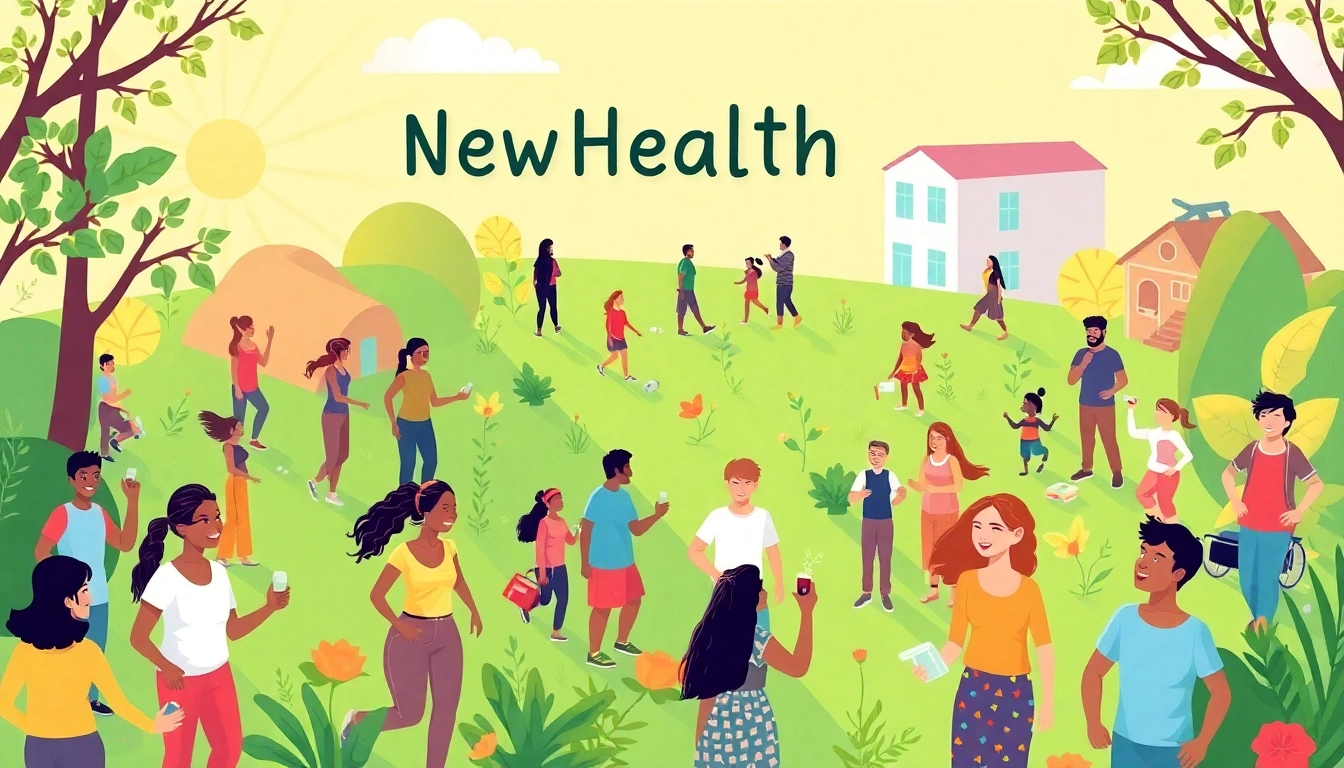Understanding Health Informatics
Health informatics stands at the intersection of healthcare, information technology, and data management. It embodies an interdisciplinary approach that incorporates the use of data, information systems, and communications technology to enhance health outcomes and healthcare delivery. In today’s ever-evolving healthcare landscape, understanding the principles and practices of health informatics is crucial for healthcare professionals, administrators, and policymakers alike. For further insights on developments in this field, refer to www.informaticsview.com, where comprehensive resources and updates can be explored.
What is Health Informatics?
Health informatics is defined as the science that deals with the application of information technology to the field of health care. It involves a multidisciplinary approach that encompasses the collection, storage, retrieval, and sharing of health-related data. The ultimate goal of health informatics is to improve health care services and health outcomes by effectively utilizing information technology.
Key Benefits of Health Informatics
- Improved Patient Care: Health informatics systems allow for better tracking of patient data, which can lead to more informed clinical decisions and ultimately improved patient care.
- Enhanced Data Management: Electronic Health Records (EHR) streamline the storage and management of patient information, making it easily accessible to authorized healthcare providers.
- Increased Efficiency: Automation of routine tasks and better data flow reduces administrative burdens, allowing healthcare providers to spend more time on patient care.
- Data-Driven Decision Making: With access to comprehensive data analytics, healthcare professionals can make informed decisions, leading to better patient outcomes and operational strategies.
- Cost Reduction: By improving workflows and reducing redundancies, health informatics can contribute to significant cost savings for healthcare facilities.
Major Trends in Health Informatics
The landscape of health informatics is continuously changing, driven by advancements in technology and shifts in patient care paradigms. Major trends include:
- Telehealth: The adoption of telehealth services has surged, enabling remote consultations and care delivery, especially following the COVID-19 pandemic.
- Artificial Intelligence (AI): AI technologies are increasingly being integrated into health informatics to enhance predictive analytics, allow for personalized medicine, and streamline administrative processes.
- Wearable Health Technology: Devices such as smartwatches and fitness trackers are providing continuous health data, contributing to proactive health management and personalized care plans.
- Patient Engagement Tools: Patient portals enable greater engagement through easier access to health records, appointment scheduling, and communication with healthcare providers.
- Interoperability: The push for systems that communicate effectively with one another continues to drive innovation, aiming to create a seamless flow of information across various healthcare platforms.
Applications of Informatics in Healthcare
Electronic Health Records (EHR)
EHR systems are digital versions of patients’ paper charts, encompassing comprehensive information about patient history, treatments, test results, and more. The benefits of implementing EHR systems can be substantial:
- Accessibility: Authorized healthcare providers can access a patient’s medical history at any time, enhancing coordinated care and reducing duplication of tests.
- Data Analysis: EHRs facilitate the use of analytics to identify trends in patient care and outcomes, enabling data-driven improvements in practice.
- Cost Savings: Reducing the reliance on paper records can lead to significant cost reductions in administrative operations.
Telemedicine and Remote Care
Telemedicine allows healthcare professionals to evaluate, diagnose, and treat patients remotely using telecommunications technology. This innovation has numerous applications, including:
- Access to Care: Telemedicine bridges the gap for patients in remote or underserved areas, providing them access to specialist consultations they might not otherwise receive.
- Convenience: Patients can receive care from the comfort of their homes, which is especially valuable for those with mobility challenges or chronic conditions.
- Reduced Costs: Telemedicine can reduce the costs associated with hospital visits and emergency care, benefiting both patients and healthcare systems.
Clinical Decision Support Systems (CDSS)
CDSS are health information technology systems that provide healthcare professionals with knowledge and patient-specific information, intelligently filtered or presented at appropriate times, to enhance health and healthcare. Their applications include:
- Alerts and Reminders: CDSS can generate alerts for potential drug interactions, allergies, or reminders for preventive care guidelines.
- Diagnostic Assistance: By integrating patient data with clinical knowledge bases, CDSS can assist clinicians in making accurate diagnoses and selecting treatment options.
- Improved Patient Safety: By reducing medical errors through decision support, these systems enhance patient safety and overall care quality.
Challenges in Implementing Informatics
Data Privacy Issues
With the increase in electronic data storage and sharing, data privacy has become a significant concern in health informatics. Issues such as unauthorized access to patient information and potential data breaches necessitate stringent data governance protocols:
- Compliance with Regulations: Organizations must adhere to regulations like HIPAA (Health Insurance Portability and Accountability Act) to safeguard patient privacy.
- Data Encryption: Implementing encryption methods for data at rest and in transit is essential for protecting sensitive health information.
Integration with Existing Systems
Implementing new informatics systems requires seamless integration with existing healthcare infrastructure. Challenges can include:
- Interoperability Issues: Different systems must be able to communicate effectively for data sharing, which often requires standardization and compliance with protocols.
- Resistance to Change: Healthcare professionals may resist transitioning to new systems due to familiarity with established processes. Education and training are crucial to ensure smooth adoption.
Training and Adoption
The successful implementation of health informatics systems depends heavily on training staff effectively. Challenges in this area include:
- Comprehensive Training Programs: Develop training programs that cater to users at all levels to ensure proficiency with new technologies.
- Support Structures: Establish support systems to assist users post-implementation, addressing technical issues or questions that arise as staff acclimatize to the new tools.
The Future of Health Informatics
Emerging Technologies
As technology evolves, so does its application in health informatics. Emerging technologies like AI, machine learning, blockchain, and the Internet of Things (IoT) are at the forefront:
- AI and Machine Learning: AI technologies are expected to revolutionize predictive analytics, improving diagnostics and personalized medicine.
- Blockchain: Enhancing data security and interoperability, blockchain could enable secure sharing of health records while maintaining patient consent and privacy.
- IoT: Connected devices are set to improve real-time monitoring and chronic disease management, leading to proactive rather than reactive care.
Impact of AI on Health Informatics
The integration of AI in health informatics is anticipated to enhance various dimensions of healthcare:
- Predictive Analytics: By analyzing extensive datasets, AI can identify trends that aid in predicting patient deterioration or outbreaks of disease.
- Personalized Treatments: AI can help in tailoring treatments based on individual patient profiles, leading to enhanced outcomes.
- Streamlined Operations: Automation of administrative tasks through AI can lead to significant efficiency gains within healthcare systems.
Policy and Regulation Developments
Policies and regulations surrounding health informatics continue to evolve, affecting data sharing, privacy, and the implementation of new technologies. Key focus areas include:
- Data Governance: Clear guidelines on data ownership, sharing, and access must be established to maintain trust and ensure patient privacy.
- Standardization: As informatics becomes more integral to healthcare, the establishment of standards for systems and data exchange is critical for interoperability.
Engagement and Learning Resources
Webinars and Workshops
Ongoing education in health informatics is essential for healthcare professionals. Engaging in webinars and workshops can enhance knowledge on emerging trends, technologies, and best practices:
- Interactive Learning: Webinars often feature Q&A sessions and interactive elements that foster engagement and allow participants to clarify concepts discussed.
- Networking Opportunities: These events also provide networking opportunities, allowing professionals to connect and share experiences and insights.
Online Courses and Certifications
Numerous resources are available online for professionals seeking to deepen their understanding of health informatics:
- Certification Programs: Various institutions offer certification programs in health informatics that can enhance a professional’s career prospects.
- Continuing Education: Online courses provide flexible learning options tailored to individual needs, enabling healthcare professionals to enhance their skills at their own pace.
Relevant Publications and Research
Staying updated with the latest research and publications in health informatics is vital. Some notable resources include:
- Health Informatics Journals: Journals such as the Journal of American Medical Informatics Association (JAMIA) publish peer-reviewed research that informs best practices and emerging trends.
- Professional Organizations: Membership in organizations like the American Medical Informatics Association (AMIA) provides access to valuable resources, publications, and networking opportunities.



